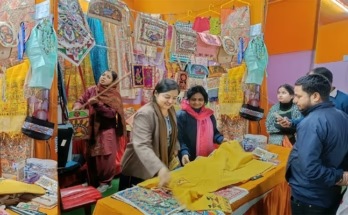 by Sanjay Saxena
by Sanjay Saxena
Lucknow: The recent by-elections in Uttar Pradesh, discussions about how many seats the BJP and Samajwadi Party will win can be had, but based on the kind of voting witnessed, it appears that the Bahujan Samaj Party (BSP) is once again standing on the sidelines. BSP did not seem to be putting up a strong fight in any seat. It seems that BSP supremo Mayawati’s path has become more difficult. The main reason for this is that BSP’s core voter base, the Dalits, have now seemingly chosen BJP and SP as their preferred parties. Because of this, BSP was largely absent from the main competition, leaving BJP and SP to face off directly.
Like BSP, Chandrashekhar Azad’s Azad Party also did not make any significant impact. In many constituencies, Dalit voters were divided between BJP and SP, which made the BJP-SP contest more complicated. The party that secures more Dalit votes will likely emerge victorious.
The most surprising development was in the Muslim-majority constituency of Kundarki in Moradabad, where the BJP managed to make inroads into the Muslim vote, which was considered unexpected. On the other hand, in Kanpur’s Sisamau, a tight contest between SP and BJP is expected. In about half of the 50 polling booths here, BSP candidates were not visible.
In the SP stronghold of Mainpuri’s Katehri by-election, the situation before voting seemed different, and the contest was expected to be triangular. It was anticipated that BSP candidate Amit Verma would disturb the Samajwadi Party’s votes among his community, potentially weakening SP’s position. However, this did not appear to be the case during voting, and in the end, it was a direct contest between BJP’s Dharmraj Nishad and SP’s Shobhavati Verma. BSP’s performance may have upset the balance between the lotus (BJP) and the cycle (SP). Political analysts suggest that if BSP manages to retain its traditional voters and maintain caste-based calculations, it could harm the SP’s prospects.
In the by-election for the Meerapur assembly seat in Muzaffarnagar, there were reports of altercations between police and voters. The contest seemed to narrow down to RLD-backed BJP candidate Mithlesh Pal and SP’s Sumbul Rana. BSP and ASP candidates appeared to be in a distant third position. The outcome of the election could be determined by the voting pattern in Muslim-majority villages. In villages dominated by backward castes and Jats, RLD’s candidate appeared to have the upper hand. In Muslim-majority areas like Kakaroli, Sikri, Meerapur, Jatwada, and Joli, votes were split between SP, BSP, and ASP. After stone-pelting in Kakaroli, Muslim voters appeared to consolidate in favor of the SP candidate. In Meerapur, there was a division among Dalit voters. Youths leaned towards the SP, while others seemed to favor BSP. There was also a keen focus on how the Gurjar votes were distributed.
In the Phulpur assembly by-election in Prayagraj, about a dozen candidates were contesting, but the main battle appeared to be between the BJP and SP. In some areas, SP had the edge, while in others, BJP was leading. The results will likely depend on which side Dalit voters lean towards. Similarly, in the Aligarh’s Khair seat, a direct contest between SP and BJP candidates was evident.
Amidst claims of victory by both BJP and SP, the Election Commission has also released the voting percentage for the by-elections. The highest voting was recorded in Kundarki (57.7%), while the lowest was in Ghaziabad (33.3%). The voting percentages for other constituencies were: Meerapur (57.1%), Khair (46.3%), Karhal (54.1%), Sisamau (49.1%), Phulpur (43.4%), Katehri (56.9%), and Majhwan (50.4%). In all constituencies, voter turnout did not exceed 60%. In comparison, during the 2022 assembly elections, the voter turnout across these 9 seats was 62.14%. The voting percentages then were: Sisamau (56.85%), Khair (60.80%), Kundarki (71.26%), Meerapur (68.65%), Karhal (66.11%), Ghaziabad (51.77%), Katehri (62.5%), Phulpur (61.1%), and Majhwan (60.3%). In those elections, SP won four seats, BJP three, RLD one, and Nishad Party one.



